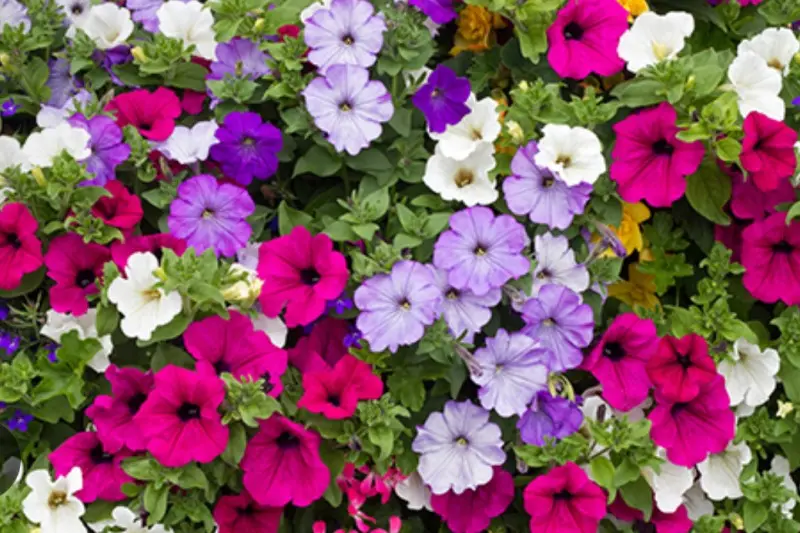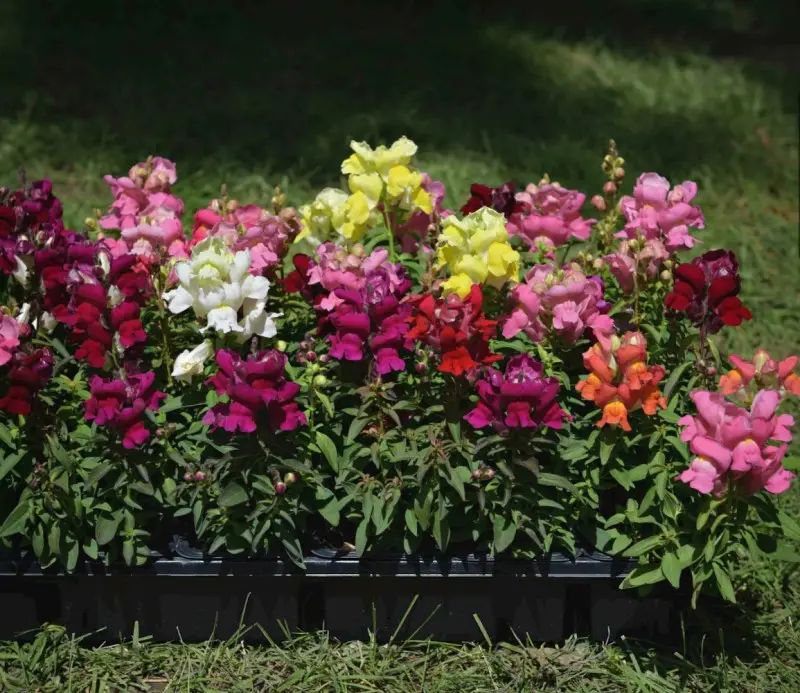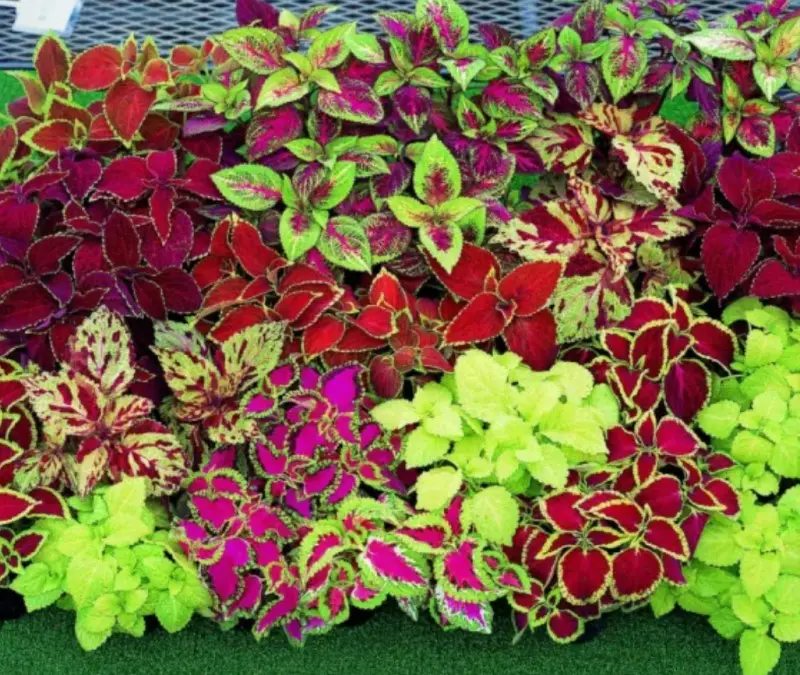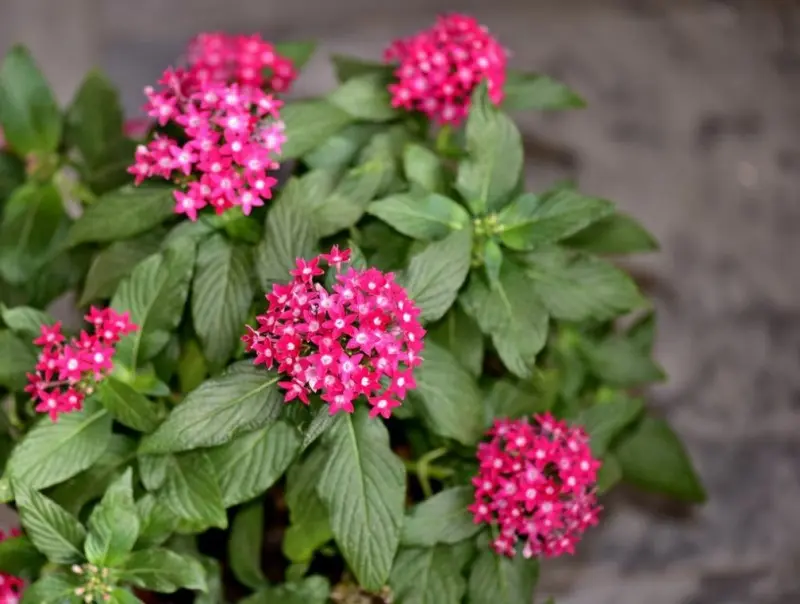-

Petunias
$0.00
Spring/Fall
6 to 18 inches tall
Not Deer Resistant
-
Petunias (Petunia spp.) are popular flowering annuals loved for their colorful, trumpet-shaped blooms and long-lasting display. Native to South America, petunias come in an array of vibrant colors, including shades of purple, pink, red, white, yellow, and blue, as well as striped and bicolored varieties. Blooming from spring until the first frost, petunias are often used to add bold splashes of color to garden beds, borders, containers, hanging baskets, and window boxes.
Petunias typically grow 6 to 18 inches in height and spread 12 to 24 inches, depending on the variety. They thrive in USDA zones 9-11 as perennials but are commonly grown as annuals in most climates. Petunias prefer full sun for the best flowering display, though they can tolerate partial shade in warmer areas. They do best in well-draining, moderately fertile soil and benefit from regular watering to keep their flowers lush, especially in hot weather. Some varieties, such as Wave Petunias, are bred to be highly drought-tolerant and have a vigorous, spreading habit, making them ideal for ground cover or cascading over container edges.
Low-maintenance overall, petunias benefit from regular deadheading to encourage continuous blooms, though many modern varieties are self-cleaning. They can also benefit from periodic feeding to support their flowering. While they are generally pest-free, petunias may attract aphids or caterpillars in humid conditions. With their wide range of colors, ease of care, and ability to bloom throughout the growing season, petunias are a versatile choice that adds vibrant, season-long color to both formal and informal gardens.
-

Dianthus
$0.00
Spring/Summer/Fall/Winter
6 to 12 inches tall
Deer Resistant
-
Dianthus (Dianthus spp.), commonly known as Pinks or Carnations, is a charming flowering plant admired for its delicate, fringed petals and sweet, clove-like fragrance. Native to Europe and Asia, Dianthus comes in a range of colors, including shades of pink, red, white, purple, and bicolors. Known for its star-shaped, often ruffled blooms, Dianthus is a popular choice for garden borders, rock gardens, and containers, adding color and scent from late spring through fall.
Dianthus plants typically grow from 6 inches to 18 inches in height, depending on the variety, and feature narrow, bluish-green foliage that provides a soft, textural contrast to the flowers. These plants thrive in full sun and well-draining, alkaline soil enriched with organic matter. Although Dianthus is moderately drought-tolerant once established, it benefits from regular watering to maintain blooms, particularly during dry periods. Hardy in USDA zones 3-9, many Dianthus varieties are perennial, allowing them to return year after year, while others are grown as biennials or annuals in cooler climates.
Easy to care for, Dianthus requires minimal maintenance beyond occasional deadheading, which promotes additional blooming and prevents the plant from becoming leggy. It is generally resistant to pests and diseases but may attract occasional aphids or slugs in wet conditions. With its delightful fragrance, long-lasting blooms, and compact form, Dianthus is a versatile plant that enhances gardens with color, scent, and texture, making it a popular choice for gardeners seeking low-maintenance beauty in borders, beds, and containers.
-

Snapdragon
$0.00
Spring/Fall
6 to 36 inches tall
Deer Resistant
-
Snapdragon (Antirrhinum majus) is a popular flowering annual (or short-lived perennial in milder climates) known for its tall, spiky blooms and unique "dragon mouth" flowers that open when pinched. Native to the Mediterranean, snapdragons come in a wide range of colors, including red, pink, yellow, orange, white, and purple, with some varieties offering bicolor flowers. These striking plants add vertical interest and vibrant color to garden beds, borders, and containers, blooming from early spring through fall.
Snapdragons typically grow between 6 inches to 3 feet tall, depending on the variety, with dwarf types staying compact and taller varieties forming dramatic, towering spikes. They thrive in USDA zones 7-11 as perennials but are most commonly grown as annuals in other regions. Snapdragons prefer full sun and well-draining, fertile soil with regular moisture. Although they are somewhat frost-tolerant and can withstand cool temperatures, snapdragons perform best in mild spring and fall weather and can sometimes slow down in the intense summer heat.
Low-maintenance and easy to grow, snapdragons benefit from deadheading to encourage continued blooming and prevent them from going to seed too early. They are generally pest-resistant but may attract occasional aphids or fungal issues in humid conditions. With their colorful spikes, unique flowers, and ability to thrive in cooler weather, snapdragons are a favorite for creating bright, cheerful displays and are often used in both cottage and formal garden settings. Their vertical form and wide range of colors make them versatile and visually appealing in mixed flower beds and arrangements.
-

Coleus
$0.00
Summer
12 to 36 inches tall
Not Deer Resistant
-
Coleus (Solenostemon scutellarioides), also known as Painted Nettle, is a vibrant, shade-loving plant prized for its colorful, intricate foliage. Native to Southeast Asia and parts of Africa, Coleus is grown primarily for its striking leaves, which come in a wide array of colors, including shades of red, purple, yellow, green, pink, and orange. The leaves often have unique patterns, including stripes, blotches, and veins, creating a dynamic, eye-catching display in garden beds, containers, and as indoor plants. Known for adding a pop of color to shaded areas, Coleus offers season-long interest from spring through fall.
Coleus plants range from 6 inches to 3 feet in height and can vary in growth habit, from compact, bushy forms to trailing varieties ideal for hanging baskets. They thrive in partial to full shade but can also tolerate some morning sun, particularly in cooler climates. Preferring well-draining, moist soil rich in organic matter, Coleus plants require regular watering, especially in hot weather, to keep their foliage vibrant and lush. Although they are typically grown as annuals in cooler climates, Coleus can be grown as a perennial in USDA zones 10-11, where frost is not a concern.
Low-maintenance and easy to grow, Coleus benefits from regular pinching to encourage bushier growth and prevent flowering, as the flowers can draw energy away from the foliage. It is generally pest-resistant, though it may attract aphids or whiteflies in very humid conditions. With its wide range of colors, intricate leaf patterns, and adaptability to both outdoor and indoor environments, Coleus brings vivid, season-long color and texture to gardens, patios, and indoor spaces. Its versatility and ease of care make it a favorite for gardeners looking to brighten up shaded areas with little effort.






